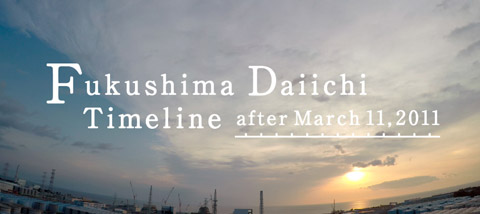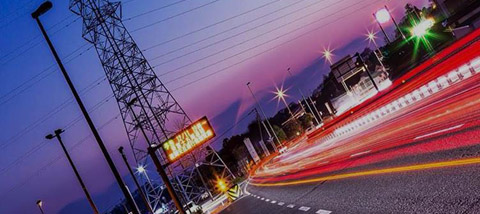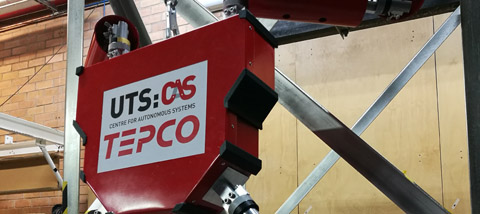Safety Measures Implementation at Kashiwazaki-Kariwa Nuclear Power Station
Stress Test
Outline of Stress Test
Stress test is conducted to evaluate the following assuming that an unexpectedly large Tsunami which is beyond the assumption at the time of designing hits the nuclear power station (Stress inflicted to the power station).
- Facility/Equipment safety margin
- Possibility of drastic situation changes to occur as the degree of stress increases.
[Impact of earthquake on regular residential house]

1. For a regular residential house, the degree of earthquake intensity (shaking) the house can withstand is considered at the time of design.
2. In the event of an earthquake, damages such as crack on the window and broken door are not inflicted if the degree of the earthquake intensity is lower than the maximum intensity considered at the time of design (Seismic margin).
3. In the "primary evaluation of stress test", up to which degree of earthquake intensity inflicts no damages to the house (crack on the window, broken door, etc.) is investigated by assuming earthquakes of intensities exceeding the design tolerance.

1. Although damages (crack on the window, broken door, etc.) are inflicted to the house as the earthquake intensity gets larger, the house can still function as a residence if it's repairable.
2. In the "secondary evaluation of stress test", the margin the house has to maintain its function as a residence (even if repair is necessary) is investigated.
Primary Evaluation Items
| Item | Point to evaluate |
|---|---|
| Earthquake | Up to which degree of earthquake intensity the reactor, etc. (reactor and fuel inside the spent fuel pool) can withstand without any damage |
| Tsunami | Up to which degree the reactor, etc. can withstand without any damage when an unexpectedly large Tsunami hits the station |
| Superimposition of earthquake and tsunami | Up to which degree the reactor, etc. can withstand without any damage when an unexpectedly large earthquake and Tsunami hit the station |
| Station blackout | How much time the reactor, etc. can remain undamaged without external support in the event of a station blackout |
| Loss of the ultimate heat sink | How much time the reactor, etc. can remain undamaged without external support in the event that the ultimate heat sink is lost |
| Severe accident management | Effectiveness of severe accident management measures evaluated from the perspective of the multiple protection |
1. Unit 7 Primary Evaluation Results
| Event | Kashiwazaki-Kariwa NPS Unit 1 Stress Test Results | Kashiwazaki-Kariwa NPS Unit 7 Stress Test Results | Remarks |
|---|---|---|---|
| Earthquake (Reactor) |
1.29 times more than the design basis earthquake ground motion Ss (Equivalent to 2,967 Gal) | 1.47 times more than the design basis earthquake ground motion Ss (Equivalent to 1,777 Gal) | A sufficient margin to the design basis earthquake ground motion was confirmed. |
| Earthquake (Spent fuel pool) |
1.45 times more than the design basis earthquake ground motion Ss (Equivalent to 3,335 Gal) | 1.37 times more than the design basis earthquake ground motion Ss (Equivalent to 1,656 Gal) | A sufficient margin to the design basis earthquake ground motion was confirmed. |
| Tsunami | 15m | 15m | A sufficient margin to the design basis Tsunami height was confirmed. |
| Station blackout (Reactor) |
Approx. 12 days (Duration of water injection) | Approx. 12 days (Duration of water injection) | Water injection to the reactor was continued for 12 days without external support. |
| Station blackout (Spent fuel pool) |
Approx. 12 days (Duration of water injection) | Approx. 12 days (Duration of water injection) | Water injection to the spent fuel pool was continued for 12 days without external support. |
| Loss of the ultimate heat sink (Reactor) |
Approx. 196 days (Duration of heat removal) | Approx. 196 days (Duration of heat removal) | Heat removal was continued for approx. 196 days without external support. |
| Loss of the ultimate heat sink (Spent fuel pool) |
Approx. 196 days (Duration of heat removal) | Approx. 196 days (Duration of heat removal) | Heat removal was continued for approx. 196 days without external support. |
Summary of Primary Evaluation Results
- Sufficient safety margin of the facilities/equipments critical for maintaining safety has been confirmed even in the case of events that are beyond the design tolerance.
- The effectiveness of emergency safety measures has been quantitatively confirmed.
The emergency safety measures implemented based on the accident at Fukushima Daiichi Nuclear Power Station contributed to diversified safety functions which led to enhanced safety.
* The outline of the comprehensive evaluation (stress test) of Unit 1 and 7 at Kashiwazaki-Kariwa Nuclear Power Station. ![]()




















